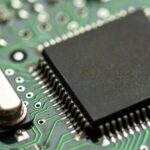Hardware, the tangible and physical components of computing devices, is the backbone of technology. It includes everything from processors and memory to displays and networking equipment. Investing in hardware can be a strategic move for those looking to capitalize on technological advancements and innovations. This article explores the realm of Investing in Hardware, shedding light on its significance and potential for substantial financial growth.
The Hardware Landscape
Hardware is the tangible part of computing, encompassing devices ranging from smartphones and laptops to servers and specialized equipment. In the rapidly evolving tech landscape, hardware enables software applications and provides the computing power needed for various tasks.
The hardware industry is multifaceted, comprising semiconductor manufacturers, computer and peripheral manufacturers, networking equipment providers, and more. It is at the forefront of technological advancements and innovations, driving progress and shaping how we live and work.
Diverse Investment Avenues
Investing in hardware provides a range of avenues to suit different risk profiles and investment preferences. One common avenue is investing directly in hardware manufacturing companies. These companies design, produce, and distribute hardware components, devices, or equipment. Examples include Intel, NVIDIA, Apple, and Cisco Systems.
Alternatively, investors can explore hardware-focused exchange-traded funds (ETFs) or mutual funds, providing exposure to a diversified portfolio of hardware-related companies. This diversified approach allows investors to spread risk and benefit from the growth of the hardware industry.
The Potential for Growth
Hardware investments have gained significant attention due to their potential for substantial growth. The continuous demand for more powerful and efficient hardware, driven by advancements in artificial intelligence, machine learning, cloud computing, and 5G technology, fuels this growth.
As technologies like the Internet of Things (IoT) and smart devices become more prevalent, the demand for specialized hardware is expected to soar. Hardware manufacturers and innovators are well-positioned to experience significant growth and market share expansion.
Risk and Opportunity
While hardware investments offer substantial growth potential, they are not without risks. The hardware industry is highly competitive and subject to rapid technological advancements. Innovation is key to success, and companies that fail to keep up with the pace of change risk obsolescence.
Additionally, global supply chain disruptions, regulatory changes, and economic fluctuations can impact the hardware market. Investors should conduct thorough research, assess risks, and stay informed about hardware trends and developments.
Conclusion
Investing in hardware is an invitation to be part of an increasingly interconnected and technologically advanced future. It’s about embracing the innovations that drive progress and improve our lives. Investing in this sector can yield significant financial gains as hardware technologies evolve and shape how we interact with the world.
However, careful consideration and due diligence are essential. Investors should stay informed about hardware trends, assess risks, and consider a diversified investment approach. Ultimately, investing in hardware offers the potential for substantial financial returns and positions investors at the forefront of a technology-driven future.











